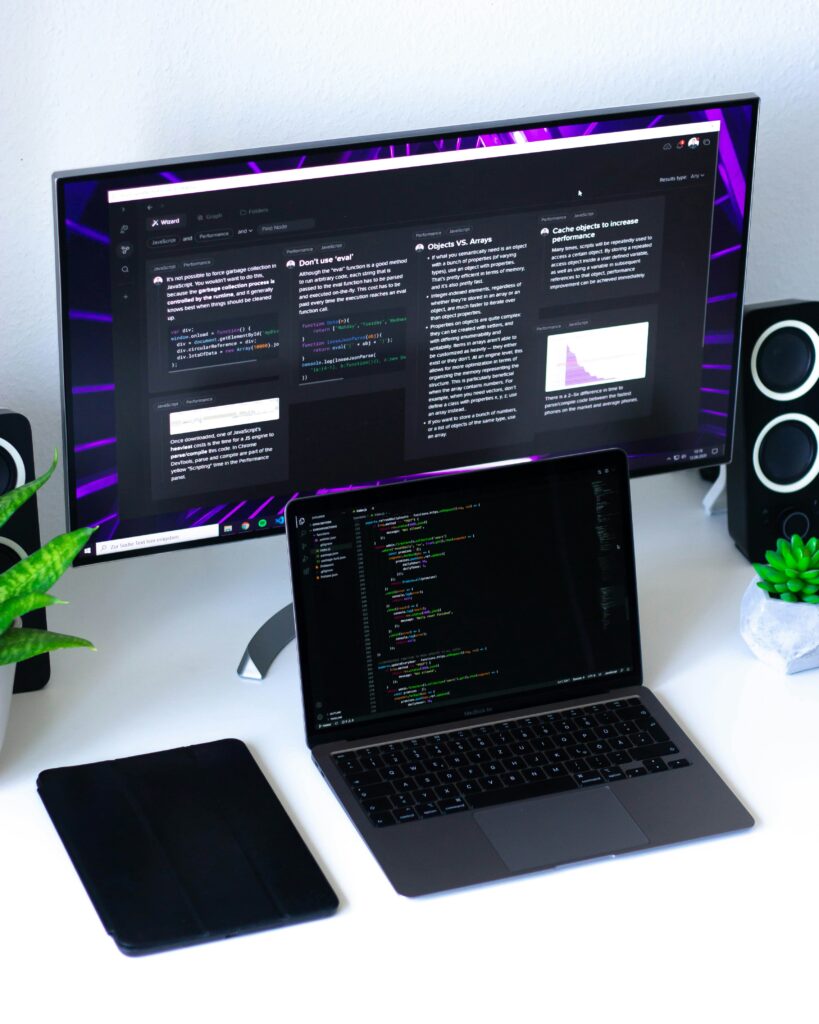Embedded Systems Development surround us all around – in household appliances and cars, in industrial regulators and healthcare devices. They run in real time, control complex processes and provide reliable functionality in life-critical systems.

What Are Embedded Systems?
An embedded system is a custom-computer system utilized to conduct specific functions within a larger apparatus. Unlike general-purpose computers, such systems are designed to accommodate specific functional specifications and are usually inclined to operate under conditions of limited computing facilities.
The salient characteristics of embedded systems:
- Limited resources. Built-in devices tend to utilize minimal power levels, minimal amount of memory, and limited processor power.
- Real time. A number of embedded systems must be guaranteed to perform tasks within a tightly defined timeframe (e.g., car control systems or medical equipment).
- High reliability. Embedded solutions are often used in mission-critical systems where failure is not an option.
Why Are Embedded Systems Important?
Embedded system design is at the heart of innovation. They provide:
- Automation and control. From home automation systems to production lines – systems of embedded software control everything.
- Energy efficiency. Optimized hardware and software, such systems can work on one battery charge for years.
- Safety and reliability. Embedded Systems Development is used in those environments in which the system’s failure can lead to catastrophic outcomes – e.g., in aviation and medicine.
Today, the demand for embedded system experts is only rising. In this comprehensive guide from Celadonsoft here, we will be discussing the most crucial tools, techniques and best practices that will help engineers build sound and efficient solutions.
Major Components of Embedded Systems
In order to build embedded systems, one needs to have a sound understanding of their key components. Any such system has hardware and software components that cooperate very closely with each other to perform the defined functions.
Hardware Part
The hardware platform of the embedded system includes:
- Microcontrollers (MCUs) and processors are the brain of the system that perform data processing and control the device. Popular examples: STM32, ESP32, AVR and ARM Cortex.
- Operational memory (RAM) and power-independent memory (Flash, EEPROM) for coding and data storage in operation.
- Sensors and actuators – ensure interaction of the system with the environment (accelerometers, gyroscopes, temperature and humidity sensors, servo drives).
- Communication modules – provide communication between devices: Wi-Fi, Bluetooth, Zigbee, LoRa, CAN and other protocols.
- Hardware component selection depends on requirements for system size, power consumption and performance.
Program Part
Software makes the embedded system work. It includes:
- Real-time operating systems (RTOS) – e.g., FreeRTOS, Zephyr, QNX. They manage multitasking and time-sensitive activities.
- Low-level drivers are software modules providing interaction with hardware devices.
- Firestorm (Firmware) – software flashed into the microcontroller to control the device.
- Communication protocol stack – e.g., TCP/IP for networking or MQTT for IoT devices.
- Optimization of software is necessary to increase stability of the embedded system and reduce power usage.
Development Tools for Embedded Systems
Embedded Systems Development is not possible without the right tool selection. They are the ones that speed up the design, aid debugging and enhance the reliability of the final product. Development environments, compilers, debuggers and simulators are the leading tools in the embedded solution ecosystem.
Integrated Development Environments (IDE)
IDE is an easy-to-use environment where one can write the code, compile it and debug it. Some popular solutions include:
- Keil μVision is an ARM-based multipurpose IDE developer supporting all major microcontrollers.
- IAR Embedded Workbench is a market-buy compiler-improved tool, possessing the highest code performance.
- MPLAB X is the programming tool through which one may operate on Microchip’s PIC and dsPIC microcontrollers.
- PlatformIO is cross-platform dev space for multiple microcontrollers, which is favorite with IoT makers.
Compilers and Cross-Compilers
To assemble embedded systems, there are certain compilers needed that convert the code into machine instructions for the specific microcontroller. Main solutions:
- GCC (GNU Compiler Collection) is an open and widely used compiler with multi-architecture support.
- ARM Compiler (part of Keil and IAR) is an ARM device-optimized compiler.
- Clang/LLVM is a GCC alternative with flexibility and compilation speed.
Cleaning Tools
Embedded system code bugs are often difficult to diagnose, and debugging and monitoring tools become essential:
- Hardware debugging interfaces like JTAG and SWD (Serial Wire Debug), allowing you to observe code executing in real time.
- GDB (GNU Debugger) for sophisticated step-by-step debugging and register state inspection.
- Segger J-Link is a popular tuning adapter providing support for many platforms.
Choosing the right tools can shorten the development time, improve the software quality and lower the risks associated with embedded solution implementations.
Design Methods for Embedded Systems

The system method of creating embedded systems needs to take into account restrictions on resources, productivity and power usage. Contemporary design methods guarantee that you can create effective and solid solutions.
Model-Based Design (MBD)
In MBD, you can create embedded systems through modeling and automatic code generation. Major advantages:
- Rapid prototyping. It is possible to test the behavior of the system on the model level before code writing.
- Automatic code generation. Avoids human errors in manual programming.
- MATLAB/Simulink compatibility. Enables engineers to use mathematical modeling and analysis in environments widely used in industry.
Modeling Systems Using UML
Unified Modeling Language (UML) is a highly effective tool for structuring the architecture of Embedded Systems Development. Important UML diagrams:
- State diagrams – show system state changes and transitions between them.
- Sequence diagrams – show the interaction of system components over time.
- Component diagrams – help to develop scalable software architecture.
Use of UML development is more organized, easier for teamwork and integration with other systems.
Prototyping and Emulation
Before developing the actual device, it is necessary to prototype the concept at an early stage. For this:
- Hardware prototyping – create using real microcontrollers and mock-up boards (e.g., Raspberry Pi, STM32 Nucleo).
- Software simulators are tools like QEMU and Proteus that allow you to experiment with code in the absence of hardware.
- HIL (Hardware-in-the-Loop) is the method by which real equipment is tested within a virtual environment.
Proper design of embedded systems is a combination of modelling, design conventions and testing in an early stage. This works towards minimizing mistakes, improving productivity and accelerating release to market.
Best Development Practices
Celadonsoft: “Embedded systems development requires not just technical proficiency, but also compliance with rigid best practices that ensure the code is dependable, efficient and easy to support.”
Testing and Verification
- Modular testing: module-by-module tests before integration. Special tools like Unity Test Framework and Google Test are utilized.
- Integration testing: module-to-module testing, especially in systems that employ RTOS.
- Testing on real hardware: emulators and simulators are helpful, but the system ultimately must be tested in real working conditions.
Version and Configuration Management
- Using Git: code organization in the repository, version control, CI/CD.
- Build automation: use tools like CMake and Make for a typical build of the project.
- Dependency control: minimizing external dependencies to make the system more stable.
Documentation and Code Support
- Documented comments: use Doxygen for auto-documentation.
- Codestyle and Revision: Maintaining consistent code-guids and continuous peer-review guarantees the overall quality of the code.
- New developer training: extensive documentation reduces the adapting process in the project.
Future Directions of Development of Embedded Systems
The embedded system world is changing immensely, keeping pace with new technology and demand. In 2025, several primary directions in development are apparent.
Embedded System Integration with IoT
- Edge Computing: calculation on devices in an effort to shift the cloud services load.
- IoT-Platform: leverage AWS IoT, Azure IoT Hub, Google Cloud IoT for device management.
- New communication protocols: Wider usage of Matter, Thread and NB-IoT for device interaction.
Machine Learning and Artificial Intelligence
- TinyML: Execution of AI algorithms within low-power microcontrollers directly.
- Stand-alone systems: Embedded AI systems for independent management, data analysis, and decision-making.
Wireless Technology Development
- 6G and impact: Increased speed of data transmission and decreased delay.
- Low-Power Wide-Area Networks (LPWAN): Greater deployment of LoRa, Sigfox and NB-IoT in sensor networks and smart cities.







